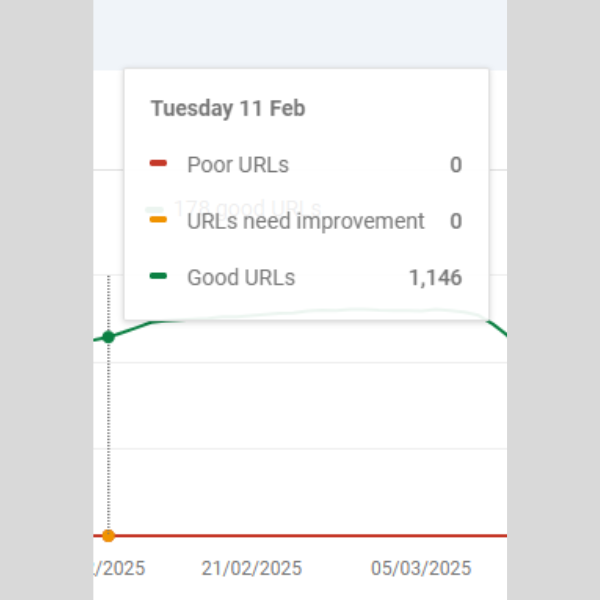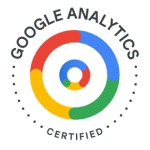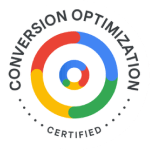Questions to Ask When Building a New Website:
5 Essentials BEFORE You Start.
Launching a new website
Launching a new website is often seen as the start of something exciting. A rebrand. A relaunch. A new phase for your business. But too often, the reality is that new websites are rushed, focused more on aesthetics than performance, and built without fully considering how they’ll support acquisition, conversion and long-term customer retention from the very start of the design process. This leads to additional costs as the website redesign occurs earlier than the original planned lifespan.
A good website isn’t just a brochure for your brand — it’s your top-performing sales rep. The one that never sleeps, doesn’t call in sick, and doesn’t need a company car or an ego to do its job. So are you investing the right resources and budget to do it justice?
All of the below have been included in the design project for the new Arboreal Marketing Ltd site, which is now live!

1.
It all starts with SEO
Far too many new websites go live without considering the dramatic drop in search rankings. Content that was ranking well vanishes. Pages with valuable backlinks are quietly redirected without context. Suddenly, organic traffic tanks. Often, if you speak to your website design agency, they will scratch their heads in puzzlement while your SEO agency screams for attention and despairs that you didn't talk to them first.
Sometimes the challenge is driving organic traffic to your new website. You find you have to rely on PPC to gain any traffic at all, and despite your best efforts - you can't increase your rankings. This is often because you aren't aware that your Google Core Vitals are poor, with baggy code from WYSIWYG off-the-shelf providers like Squarespace pulling your website back. Or it's your on-page structure, with missing header tags or duplicate headers, or simply the inability to add enhancements like SCHEMA.
That’s because search performance wasn’t built into the foundations. It was bolted on later. If you’re building a new site, you should start with a full SEO audit. Understand which of your current pages have value in search engines, and what’s driving that value. Look at Google Search Console data. Check backlink profiles. Use crawl tools to identify pages that are indexed and receiving impressions. And remember to tailor your content to your target audience.
Once you know what’s working, don’t discard it. Build your new site with these pages in mind in the design phase. Discuss SEO with your designer from the very first meeting. If possible, bring your SEO agency and your site designer together from the very start - or find a website design company who truly understands SEO, such as Redwing Interactive + Redwing Design. Page load speed, responsive design, and mobile-first layouts all affect your Core Web Vitals scores, and therefore your rankings.
Don’t forget the CMS either. A good one will give you access to key SEO tools: editable title tags and meta descriptions, the ability to structure your headings properly (with no duplicate H1s), and somewhere to inject SCHEMA markup directly into the page head. And yes, check your agency’s site. If they’re repeating H1 tags across their pages, not completing image alt text descriptions, and don't have a clear keyword strategy, then they may not be the right fit to design your new website.
If you're lacking the SEO expertise in-house to cover these challenges, then speak to me about SEO audits and keyword strategies.

If you’re building a new site, you should start with a full SEO audit.
We can help you define your new website
From SEO auditing through to user journey mapping
Content Management Should Be Easy
2.
2. Choose a CMS That Works for You — Not the Other Way Around
There’s a temptation to go with what looks good on the surface. Systems like Squarespace and Wix offer brilliant what-you-see-is-what-you-get content management editors, with sleek templates and drag-and-drop functionality. But they come with limitations. If you’re not a designer, it’s easy to end up with something that looks awkward, clunky, or broken—especially when viewed across different devices. This was absolutely the case with my first Arboreal Marketing Ltd website.
I use Squarespace for my affiliate blog Cook, Eat, Repeat! and it performs very well for that purpose - light, simple blog post work. Its core vitals are appalling, however, because of Squarespace's baggy CSS code, including tons of redundancies to allow for a snazzy CMS. Plus, more complex things like SCHEMA or other code injections and full integrations into Hubspot are not properly catered for. I tried the same thing for my B2B website, and it just didn't work. The templates are aimed squarely at B2C, and it was too easy to break brand when trying to maintain that professional look and feel with whitepaper download pages. Which is why our new website has been developed by Redwing Interactive + Redwing Design.
A good CMS should strike the right balance between flexibility and structure. You want to be able to update your content, manage blogs, and create new landing pages without needing an agency every time. But you also want guardrails—design templates that protect the user experience and maintain brand consistency.
WordPress has its place, it is the market leader for affiliate websites and blog posters and I think it can be a "marmite" experience; you either love it or hate it. Personally, I hate the modular "download-a-plugin" for everything content management approach and prefer to be able to do everything built in one place. So I recommend looking beyond WordPress and consider CMS options that are fit for your specific business, especially those that support robust integrations with ERP, OMS or CRM systems, ecommerce platforms or analytics tools.
The CMS I will now be using, SM5, has been developed with SEO control at its core and provides a seamless blend between freedom of creativity and a robust design framework. Everything is customisable, and content creation is easy, but without breaking the page design. Its interface is simple, and it does most of the heavy lifting when updating the site. Once you understand where each element lives and how it works, it is extremely quick to update and maintain. In time, I will look at moving my affiliate sites across, as blog post building is really easy using SM5.
A good CMS should strike the right balance between flexibility and structure.
3.
Define your website’s purpose—and your user’s journey
This sounds obvious, but surprisingly few businesses can clearly articulate what they want their website to do. Is it there to generate leads? Sell products? Educate customers? Capture first-party data?
Define the business goal, define your target audience, then work backwards to map the user journey that leads there.
Your objectives should shape the entire structure of your site, and your website navigation should reflect this. Can users find the whitepaper you want them to download quickly? If you're hoping to generate enquiries, have you buried all your contact forms at the bottom of the page? Is it visible and straightforward? If you're selling directly, the path to purchase should be seamless and fully integrated into your backend management platforms.
Don’t forget retention. Very few visitors will convert on their first visit. Think about how you can give them a reason to come back. Content that’s useful, informative, and regularly updated can keep your audience engaged, while email capture through guides, playbooks or gated insights can help build long-term relationships.
Before you even commission your new website - think about your current one, what was its original objective? Who are your key segments? What do your target clients get from the competition that you don't provide? Your designer should be working with you to map this out from day one. Not just the sitemap, but the user journey. What happens when someone lands on your homepage from a direct link? What if they arrive via a blog post found through organic search? What if they’re on mobile, on a train, looking for a quick answer?
Different users have different expectations. Build your site to serve them all.
And if you're not sure - speak to someone who can help. Arboreal Marketing Ltd can work through your website data, your acquisition channels and your target personas to provide you with insight on current performance and help with your strategy for the new website.

Define the business goal, define your target audience, then work backwards to map the user journey that leads there.
Need help defining what your website is for?
We can build a digital strategy that will deliver leads and sales
Page Design is Key
4.
Design beyond the homepage
It’s natural to focus attention on the homepage. But in reality, your target audience won’t start there. Your homepage is where direct traffic lands—people who already know your brand. But organic traffic, PPC campaigns, and social clicks often land visitors on deeper pages: blog posts, service descriptions, or product landing pages.
That means those pages need just as much attention. How does your blog post template support CTAs? Can users navigate easily to related content? Are service pages optimised for clarity, with meaningful headings and persuasive copy?
Every page should have a purpose. Every page should guide the user forward. Think about the next action you want someone to take—and make it obvious. Clear navigation, in-line calls to action, and signposting between related content all help build a user experience that leads to conversion.
It’s also worth thinking about the psychology of design. What visual cues help build trust? What reassurance can you offer through design choices, such as review badges, guarantees, or real photography?
Every page should have a purpose. Every page should guide the user forward.
5.
Don't lose them right at the end!
Whether it’s a checkout or a contact form, the final stage of the user journey is often where things fall apart. Too many businesses lose leads and sales because this step hasn’t been thought through.
If you’re in eCommerce, your checkout should be simple, fast and mobile-friendly. Remove unnecessary steps. Ask only for the information you need. Make delivery options clear, and set expectations on fulfilment. This is where trust matters most—so avoid surprises.
If your website is B2B eCommerce, then think about integrations and account-based ordering. Off-the-shelf platforms such as Shopify look like a cheap and quick solution, but in the long term, you pay for that shortcut. Integrations are the key to great B2B eCommerce experiences, real-time pricing, stock information, ordering on account, invoice management, portal-based customer service and even product builders/calculators all increase website retention and will rapidly build your average order value. Find website design agencies that love complex websites and can integrate into anything. Redwing Interactive + Redwing Design have recently completed a project integrating an eCommerce site into SAP, and the power this adds to the customer experience is dramatic. Get this right and your offline overheads and FTEs could be dramatically reduced.
If you’re focused on business growth through lead generation, make sure your contact form is visible throughout the site, not just at the bottom of one page. Use copy that reflects your audience’s likely questions or pain points, and think about how you can capture the information that will help your sales team tailor their approach.
Don’t forget the post-submission experience. A thank you page isn’t just good manners—it’s a crucial step in your analytics setup. It allows you to track conversions accurately in GA4, create retargeting audiences, and measure which campaigns are delivering results.
And finally, don’t assume people read everything. Design for scanners as well as readers. Some users will make a decision within seconds—so make sure your value proposition, CTA and reassurance content are visible without endless scrolling.
A thank you page isn’t just good manners—it’s a crucial step in your analytics setup.
Final Thought:
Plan for the People, Not Just the Pages
Too often, websites are designed as standalone objects. But in reality, they’re part of a broader ecosystem. Your site connects your marketing, your sales process, your customer experience and your brand.
The best websites are planned, not just designed. They consider who will visit, why they’ll visit, what they’ll want, and how you’ll support them. They account for different personality types, different buying stages, and different devices. Your website will be visited by all types — detail hunters who read every line, and impatient scanners who just want the quick answer. Design for both. Great websites are built by those who understand not just visual content, but how to make it work. The best-looking website in the world won’t help your business if nobody finds it, nobody engages with it, and nobody buys from it.
When selecting an agency, don’t be dazzled by fancy animations or trendy widgets. Look for a partner who understands acquisition, conversion and retention. Ask crucial questions to see how they’ve improved performance, not just design. And make sure they understand how to build something that lasts.
A website isn’t just for launch day. It’s a long-term investment in your business growth. Build it with purpose, and it will deliver far more than just good looks.
Consider who will visit, why they’ll visit, what they’ll want, and how you’ll support them.
Learn more about website optimisation
We can help you with SEO, CRO and Training
Converting Websites: How small conversion rate increases can save digital marketing budgets.
We can help you
Let us know what marketing challenges your business is facing and we'll be in touch to arrange an introductory call.
Tell us about your project




